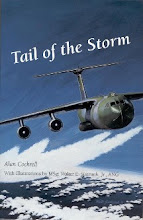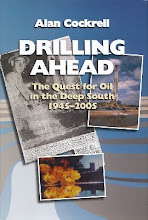The long dry spell continues. I have logged only about 50 hours in the last eight weeks. This makes for poor pickings for blog topics. But it generates a lot of time to muse up crazy stories. Loggin' Light Years is a story of a day in the life of an airline pilot who lives far in the future. I asked some of my first officers to come up with ideas about what the future of the airline profession might look like. Some of those ideas went into this story.
Part I
Captain Bob Stickman flashed his taxi light, noting with satisfaction how all 18 of the launch crew quickly formed a neat line in front of the aircraft. Some held hydraulic arming pins high for him to see. Others put their thumbs up. The launch captain stood in front and rendered a sharp salute. Bob returned it and instructed First Officer Jennifer Winger to request taxi clearance. She pushed a button on her work station console and a minute later a message flashed clearing them to taxi to runway 27 Left-Lower.
This was Bob’s first trip with Jennifer in several years, but he had flown with her on the atmospheric fleets and remembered she was a good first officer. He looked forward to flying with her again.
The eight mile long taxi route immediately appeared on Bob’s EHSI. He touched the Arm HMP icon and saw that it began flashing on both his and Jennifer’s console. “Engage HMP,” Bob uttered. They both touched the icon and noted that it switched from red to green. He felt a barely noticeable lurch as the hydraulic motive power engaged the wheels. Bob watched for obstacles as his behemoth moved forward and the nose swung around toward the taxi route.
Certain critical functions in the 957’s cockpit required both pilots’ agreement to initiate. If the consenting pilot did not confirm the action within ten seconds, initiation would be automatically canceled. There was also a minimum reaction interval, three seconds. The aircraft’s designers didn’t want pilots to respond too fast. The extra time forced them to think about what they were about to do.
The aircraft itself also had a say-so. Bob marveled at the safety redundancy built into the plane, remembering how the aircraft might challenge an action initiated by one pilot and confirmed by the other. A big yellow Air-Boeing logo would begin to flash at them. The unwritten message was, Do you really want to do that? The engineers wanted, no doubt, to put those exact words on the CRT but they didn’t. Instead a brief explanation would appear advising the pilots why they might want to reconsider.
Engaging the HMP was one of those critical functions. Hydraulic motive power was old technology, developed many years ago during the fuel crisis. The two pilots were well aware of the early problems that abounded when aircraft electric hydraulic pumps were modified to power hydraulic motors installed on the planes’ wheel trucks. The idea was to save fuel by taxiing without running the engines. The modification took many years to perfect, but the fuel it saved helped the industry survive the great fuel crises between 2015 and 2025. Bob was in high school then and Jennifer wasn’t even born, but they both had heard the stories and read the histories.
As the 957 crawled toward the expansive vertically tiered runway complex, Bob, nearing the end of his nearly 50 year career, found himself more often reflecting on the changes he had seen and the profound things that had happened before his time.
His dad had told him the stories about the troubled times in ’15 when the fuel started to get scarce―not that it ran out. Oil supply was already in a slow steady decline by then, and there wasn’t enough to satisfy the world’s growing thirst for it. Finally the government decided to act decisively and began earmarking fossil fuels for critical uses only. Surface transportation was forced to find other fuels and technologies while military air power and commercial air transportation were given a reprieve and allowed to use what oil was available for refining.
Bob was aware that it took many years to bridge the gap between the end of the petroleum era and the beginning of the new synthetic fuels and their engines, hard times for many people. And the wars that resulted had cost millions of lives. Hard to believe, Bob thought, that people would try to exterminate each other for a bunch of black goo. He shook his head. How did his parents ever live through those years?
(to be continued)
The future ain't what it used to be.--Yogi Berra





No comments:
Post a Comment